QuestionI am setting up a 75 gallon tank real soon. I know all about the cycling and things like that. My plan is for 1 Jack dempsey, 2 convicts, and a featherfin squeaker. Does this sound like a good mix and what type of subtrate would be best for the mix.
AnswerHi Dave,
I've written an article about cycling. I hope this helps you out!
CYCLING made simple
It is essential to understand the basic principles of cycling your tank. Not knowing how means your whole hobby can fail completely. I'll try to explain it simply-
There are special 'good' bacteria that live in huge colonies in your gravel bed, the filter, and on all decorations and other surfaces. These bacteria convert ammonia into another chemical called Nitrite. Both ammonia and nitrite is EXTREMELY toxic to fish. Finally, more bacteria convert the nitrite into a non-toxic chemical called nitrate which can be allowed to build up with no harmful affects to your fish unless it gets very high. Nitrate is used by plants and is removed by your regular partial water changes.
But these bacteria aren't present right away when you first setup an aquarium, and without these bacteria ammonia will build up to very dangerous levels if you try to stock the tank with a lot of fish the first day or two after being setup. But you need the ammonia foodsource to get the bacteria started growing. What cycling means is slowly allowing the beneficial good bacteria to colonize your tank with just a few small hardy 'cycling' fish to provide the ammonia source. When you first add your cycling fish (such as Black widow/skirt tetras, zebra danios, or platies) you'll need to use an aquarium test kit found at your local fishstore to test for ammonia, nitrite and nitrate. Monitering these levels is essential for keeping your cycling fish safe and for letting you know how far along in the cycling you are.
You'll need to-
* Add 2-3 small cycling fish (Black skirt tetras or Danios)
* Test your ammonia the day after adding the fish
* Feed your fish -very- lightly just once a day
* when your tank cycles, they can have a little more frequent feedings and more variety.
* Whenever your ammonia levels rise above safe bounds, immediately do a 30-50% water change to bring the levels down. This is essential for saving the life of the fish.
* Doing water changes won't disrupt the cycling of your tank. The bacteria live on the surfaces in the tank not free-floating in the water itself. Your aquarium will still cycle properly when even large water changes are done frequently
* Continue testing your water everyday for ammonia and nitrites
*You'll usually notice your ammonia slowly rising at first for several days, then nitrite may rise with a slight drop in ammonia levels... Somewhere along the line you'll get nitrate readings which means your tank is nearing the end of the cycling. Every tank cycles slightly differently. Most aquariums cycle within 3-6 weeks...
*Patience during cycling and tank stocking is essential! Don't forget the importance of water changes and regular testing of your water.
*Remember during cycling that you should not add anymore fish whilst your tank is still cycling. Only have your cycling fish
Once the ammonia and nitrites drop to ZERO and nitrate has accumulated, your tank has cycled!!! You can now begin to gradually build up your stocking level. Add only a few fish every week or so and make sure to test your water the day after adding each new addition of fish to make sure you don't have an ammonia spike, if this does occur a quick 30-50% water change will immediately treat the problem and soon the bacteria should take over and deal with the new bioload.
----------------------
Now I do know this is a cichlid tank. And the cycling fish I listed aren't the best tankmates for cichlids at all. And I don't really recommend cycling with just one cichlid because then during the time the tank takes to cycle, he will have established the whole tank as his territory and it'd probably be very hard to introduce any new fish once the ammonia and nitrites were stable at zero. So try a few black skirt tetras. These fish have held up to even larger cichlids before in my experience, they are quite hardy.
As far as substrate. You could use a plain fine grained gravel just fine. Or I think if you could local Silica sand (which has larger grains than most sands, therefor, doesn't compact and is easy to clean) cichlids love this and so do bottom dwellers like catfish. I'm able to get large bags of silica sand at my petshop for very cheap. See if you can find some. That'd be a great substrate.
I think your fish mix sounds very good. Raise them all up together as babies if you can, to minimize the possibility of aggression.
Best of luck!
Karen~

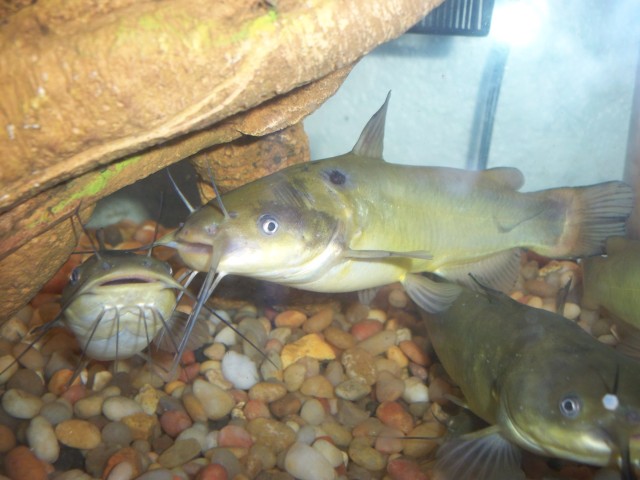 Spots and marks on catfish.
Question
Channel catfish
Hello,
I have 8 channe
Spots and marks on catfish.
Question
Channel catfish
Hello,
I have 8 channe
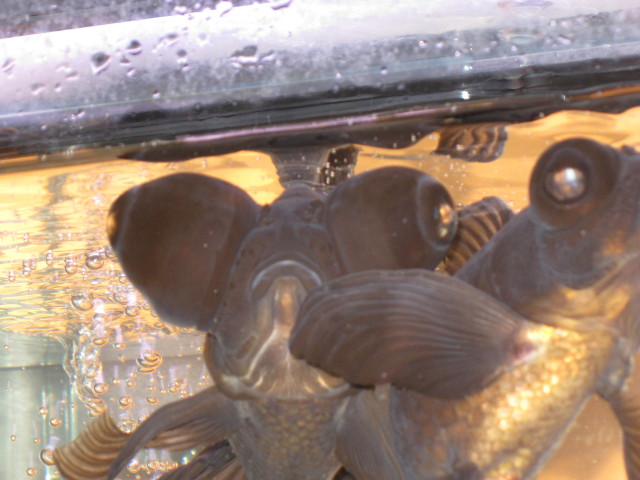 black moor eye problem
QuestionQUESTION: I have noticed today a white spot (pi
black moor eye problem
QuestionQUESTION: I have noticed today a white spot (pi
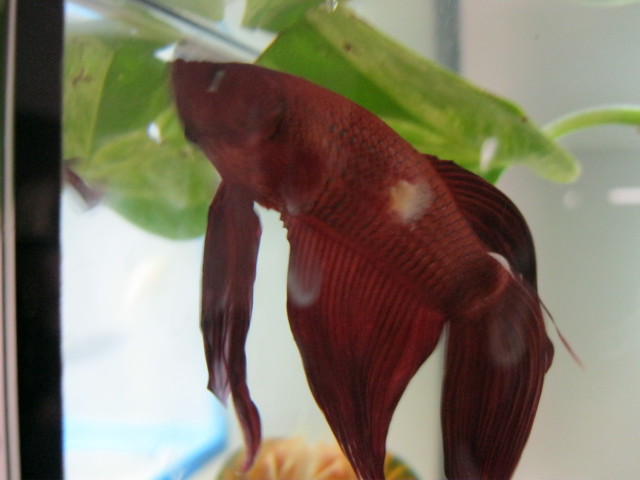 Sick Beta - open wound on side, sinking to bottom of tank
Question
Beta Fish 7 month old
I never thought I
Sick Beta - open wound on side, sinking to bottom of tank
Question
Beta Fish 7 month old
I never thought I
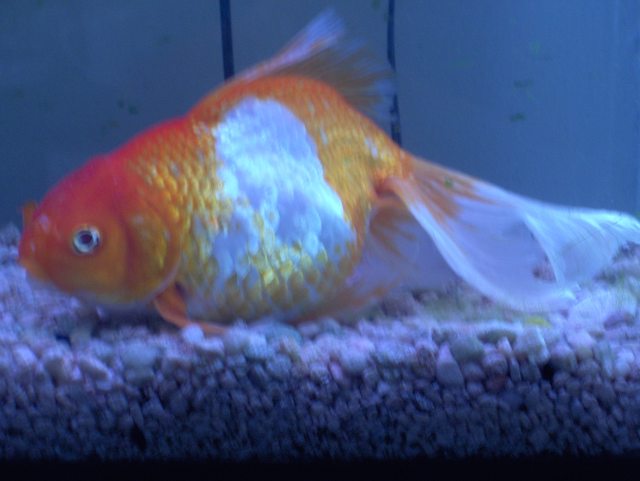 goldfish food
Question
goldie
where can I find a sinking goldfish foo
goldfish food
Question
goldie
where can I find a sinking goldfish foo
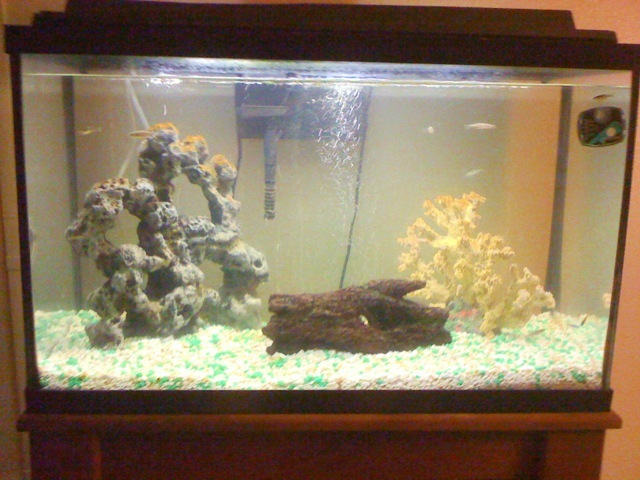 Adding Fish To My Freshwater Tank
Question
My Tank
Hi Jaymie,
My name
Adding Fish To My Freshwater Tank
Question
My Tank
Hi Jaymie,
My name